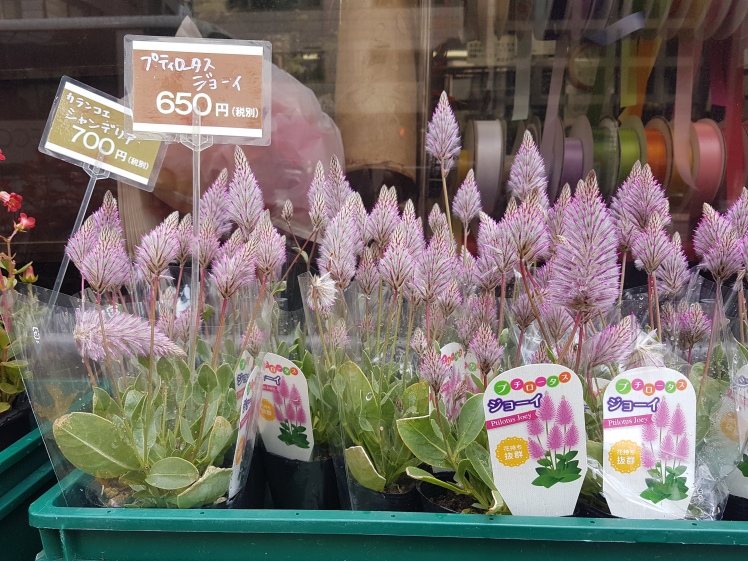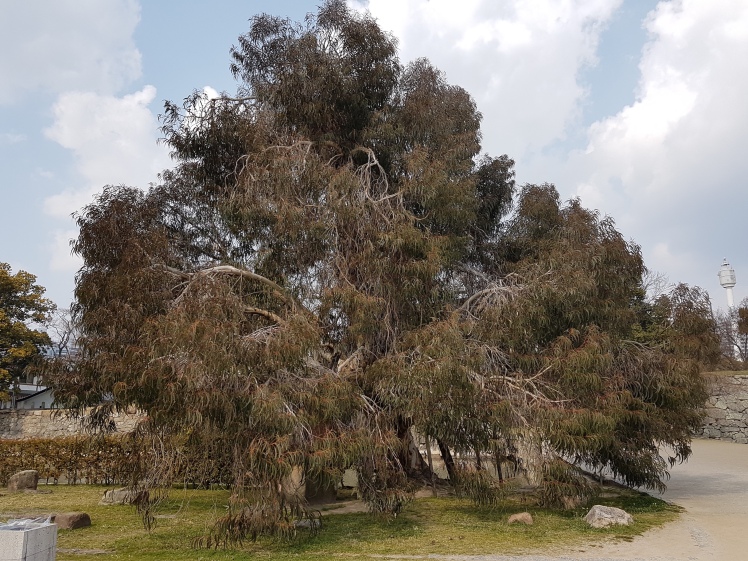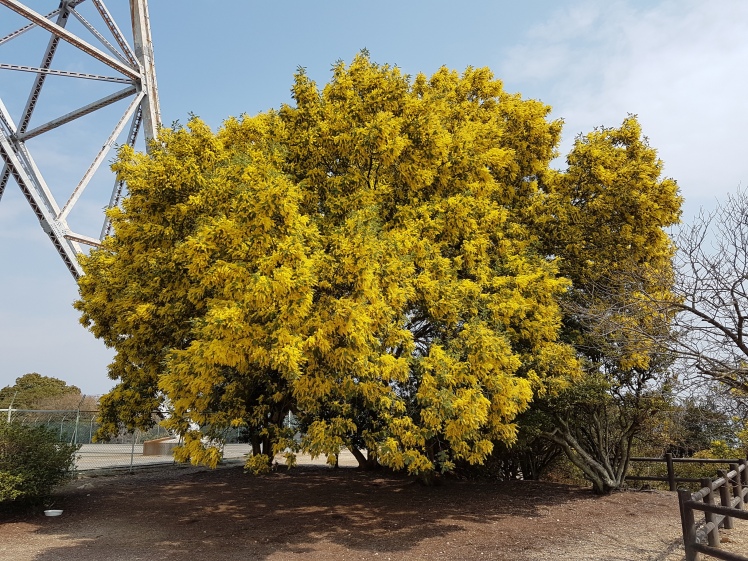In March, my husband and I went to Japan for a few weeks to tour part of the country and to also visit my host family that I had stayed with 17 years ago. Although I really enjoyed looking at all of the Japanese gardens, I couldn’t help but also keep my eye out for any Australian native plants that crossed my path. I’m sure I’m not the only Australian native plant enthusiast that would do such a thing!
Australian native plants that I noticed for sale in shops were Red Box (Eucalyptus polyanthemos) in Kamakura (south of Tokyo), Mulla Mullas (Ptilotus exaltatus ‘Joey’) in Kyoto, and kangaroo paws (Anigozanthos sp.) in Osaka. For those who are interested, the Ptilotus was retailing at almost AU$8 and the kangaroo paws in 20cm diameter pots were retailing at about AU$110! I also noticed Purple Hopbush (Dodonaea viscosa purpurea) in Kamakura, which at the time I thought was a native, however it turns out that the green form is native to Australia. I believe the purple version originates from New Zealand.

I also happened upon Hardenbergia violacea ‘Happy Wanderer’ in a street leading to a shrine in Ise, south of Nagoya; a large-flowering Grevillea cultivar near Fushimi-Inari Shine in Kyoto; and a Cut-leaf Daisy (Brachyscome multifida) outside someone’s house also in Kyoto.
Later on our trip we visited Hiroshima Castle, which along with many other buildings in Hiroshima, was razed to the ground after the atomic bombing that took place in 1945. I was surprised to find a large Yellow Box (Eucalyptus melliodora) in the grounds of the Castle, with a sign in front of it stating that it had survived the bombing. It was approximately 740 metres from the bomb’s hypocentre. When we went into the Castle, we found a photo of the tree only taken a few months after the bombing, that showed it covered in epicormic growth. It had reacted just as it would have if a bushfire had gone through.

The last place on our trip where I saw some Australian native plants was on an island called Okunoshima. It is the site of an old poison gas factory, but is now more famous for being covered in rabbits that look as if they have escaped a pet store. The tourists delight taking food over to feed them. As we were nearing the island on the ferry I noticed large patches of yellow and wondered what plant was flowering. Sure enough, when I got closer I realised that they were Silver Wattle (Acacia dealbata). Despite the island also being listed as a National Park (a strange thing when feeding introduced rabbits is encouraged!), they also had a plaque in front of one of the trees to show what the species was. Not something that you would see back home in an Australian national park!
